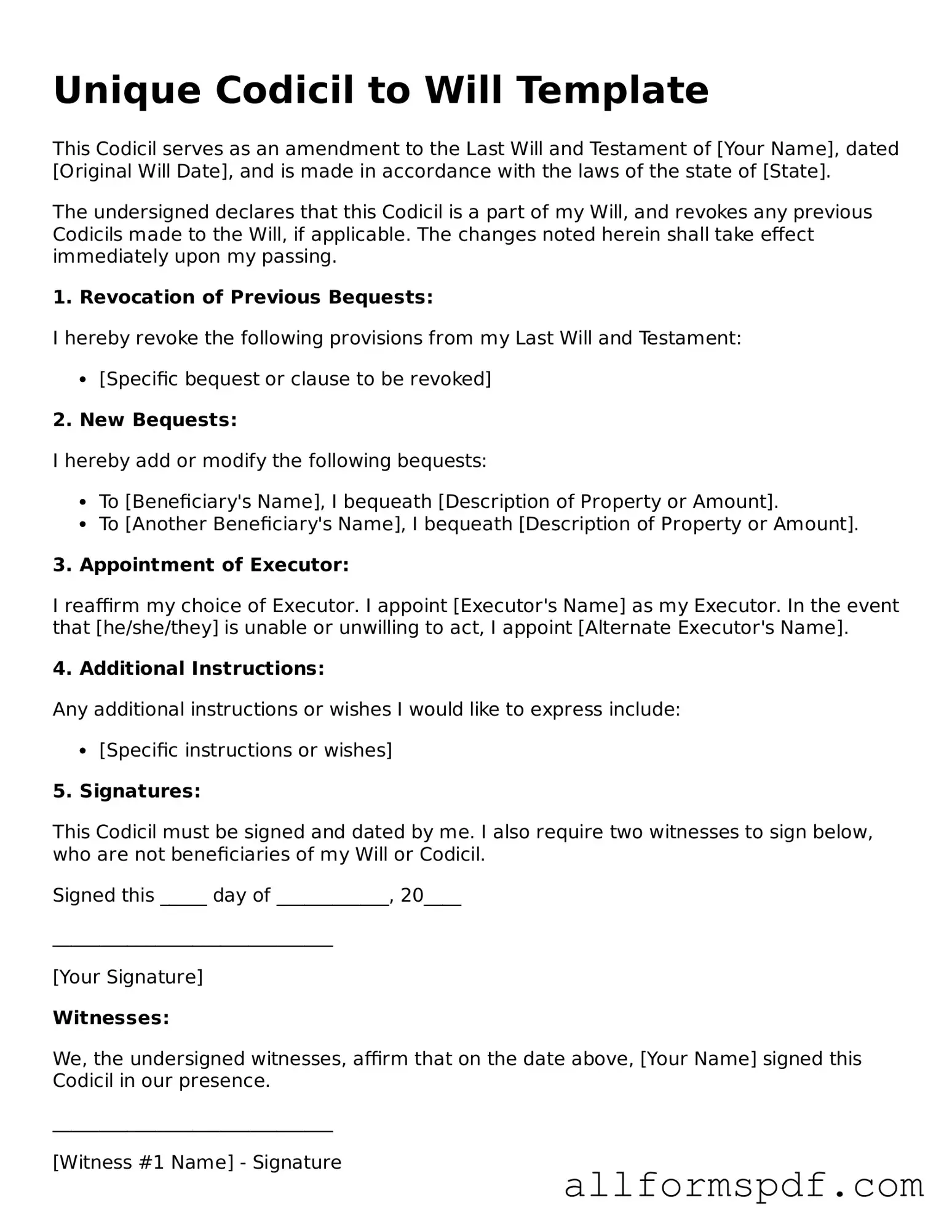Filling out a Codicil to a Will can be straightforward, but many people make mistakes that can lead to confusion or even invalidate their wishes. One common mistake is failing to clearly identify the original Will. It’s essential to reference the date of the original document. Without this information, it can be challenging to determine which Will is being modified.
Another frequent error is not signing the Codicil properly. Just like a Will, a Codicil requires your signature. If you forget to sign it or if someone else signs on your behalf, the document may not hold up in court. It’s also important to have witnesses present when you sign, as this adds an extra layer of validity.
People often overlook the need to date the Codicil. A date provides context and helps clarify when the changes were made. Without it, there could be disputes about which document is the most current. Additionally, failing to keep the Codicil with the original Will can lead to confusion. Always store them together to ensure they are found at the same time.
Another mistake is using vague language. Be specific about the changes you want to make. General statements can lead to misinterpretation. It’s also crucial to ensure that the changes do not contradict the original Will. Conflicting information can create legal challenges down the line.
Some individuals forget to review the entire document after making changes. It’s easy to miss errors or typos that could affect the meaning of the Codicil. Taking the time to read through it can help catch mistakes before they become a problem.
People sometimes assume that a Codicil can be used to make major changes. While it’s useful for small adjustments, significant changes might require a new Will altogether. Understanding the limitations of a Codicil is key to ensuring your wishes are honored.
Additionally, failing to notify relevant parties about the Codicil can create issues. Informing your executor and family members ensures everyone is aware of your intentions. This can prevent misunderstandings and disputes after your passing.
Another common mistake is not considering the implications of the changes. For example, altering beneficiaries can affect estate taxes or other financial matters. It's wise to think through how your changes will impact your estate as a whole.
Finally, some people neglect to seek legal advice when needed. If you are unsure about how to fill out the Codicil or what changes to make, consulting with a legal professional can provide clarity. It’s better to ask for help than to risk making a mistake that could affect your legacy.
